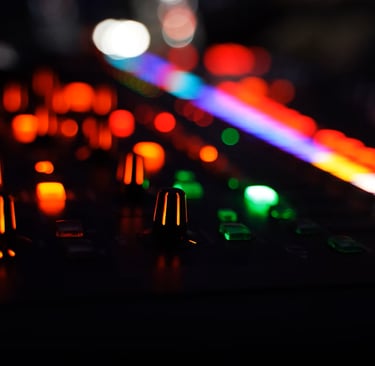What Every Beginner Should Know About Synthesizers and Samplers
Learn and discover how they differ, how they work, and which one is right for you.
EXPLORESYNTHESIZERS
Servo Sapiens


If you’re just starting out in music production, you’ve probably come across the terms synthesizer and sampler. They often show up in the same sentence, and both can create incredible sounds—but they work in very different ways.
Let’s break it down step by step.
1. What is a Synthesizer?
A synthesizer (or synth) is an electronic instrument that generates sounds from scratch. It doesn’t rely on recordings; instead, it uses oscillators, filters, and effects to create unique tones.
How it works: Think of it as a sound “designer.” A synth shapes waveforms (sine, square, triangle, etc.) and layers them with effects like reverb or delay.
What it’s good for: Synths excel at creating futuristic sounds, basslines, leads, pads, and effects you can’t find in the real world.
Famous example: The iconic buzzing bass in Daft Punk’s “Around the World” is made with a synth.
Analogy: A synthesizer is like a chef who makes a dish completely from raw ingredients.
2. What is a Sampler?
A sampler doesn’t create sounds from scratch; instead, it plays back recorded audio (samples). These samples can be drum hits, piano chords, vocal phrases, or even random noises you record yourself.
How it works: You load audio files into the sampler, then trigger them by pressing keys or pads. You can also stretch, pitch-shift, and loop the samples to get new sounds.
What it’s good for: Samplers are great for realistic instruments (like orchestral strings), chopped-up vocals, or reusing sounds from other tracks.
Famous example: Hip-hop producers often use samplers to chop old records into loops and beats.
Analogy: A sampler is like a chef reheating and seasoning leftovers—you start with something pre-made and transform it into something new.
3. Key Differences at a Glance
Synthesizer
Generates sounds from scratch
Uses oscillators & waveforms
Great for unique, electronic sounds
Example: Moog, Roland S8, Serum, Massive
Sampler
Plays back recorded audio
Uses audio recordings (samples)
Great for realistic or pre-recorded sounds
Example: Akai MPC, Roland P6
4. Which One Should You Use?
Use a synth when you want to craft your own unique sounds or create electronic-style music.
Use a sampler when you want to work with real-world sounds, recorded instruments, or chopped-up audio.
Pro tip: Many producers use both! You might use a synth for the bassline and a sampler for the drum kit in the same track.
5. Final Thoughts
Understanding the difference between synthesizers and samplers is a big step in your music production journey. While a synthesizer is like painting from a blank canvas, a sampler is more like collaging with pre-made materials. Both are powerful tools, and together, they open endless creative possibilities.
© Servo Sapiens 2025. All rights reserved.